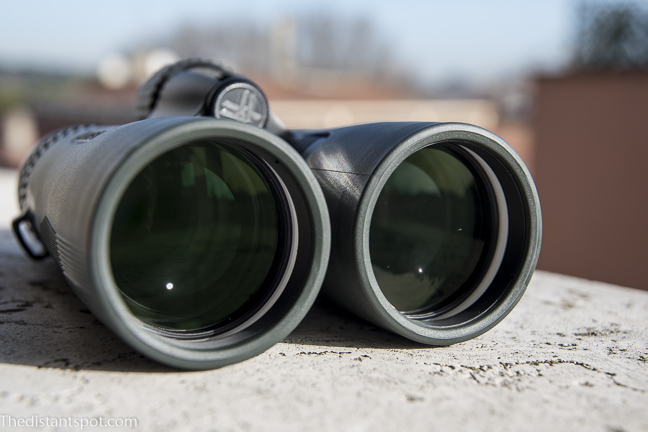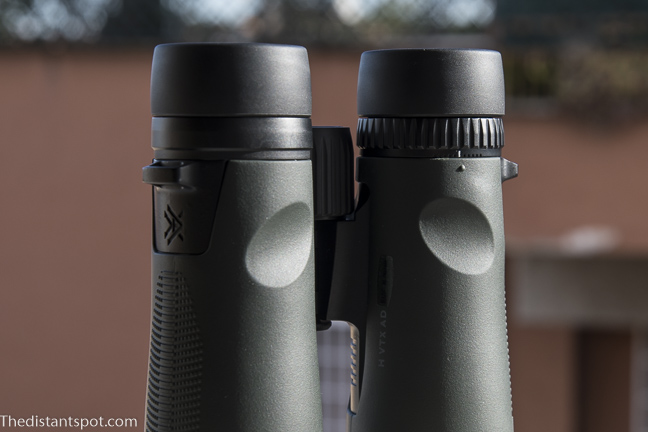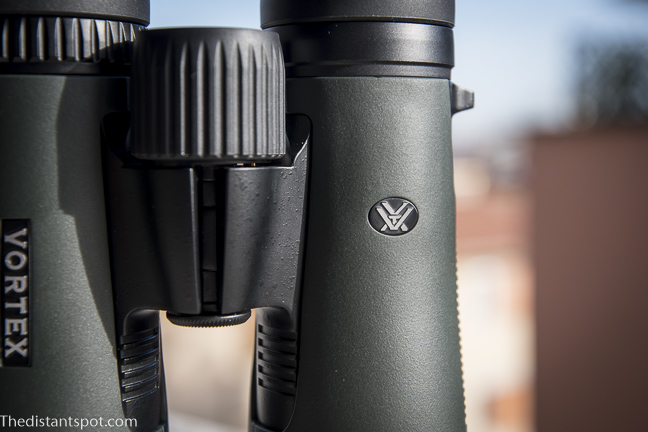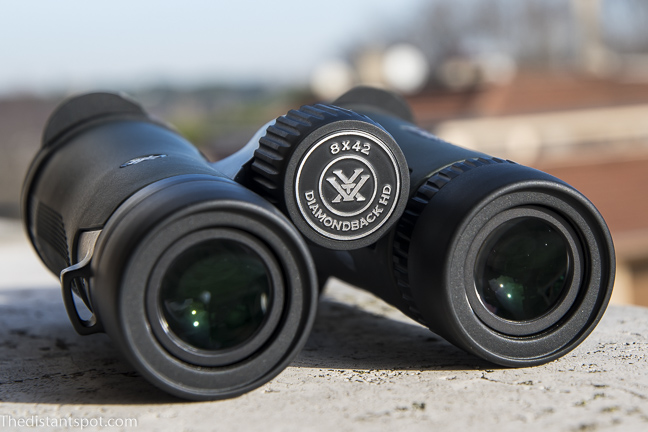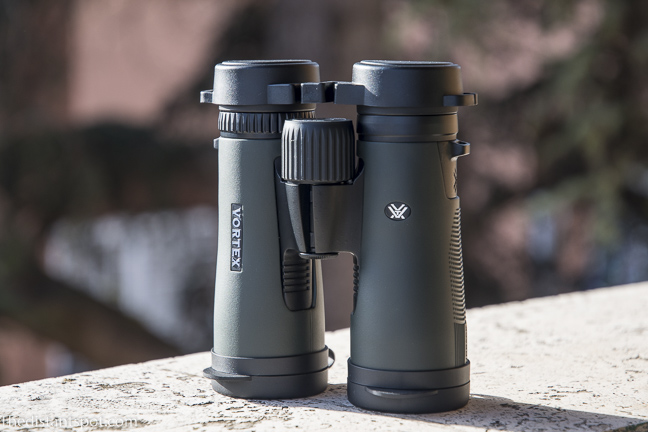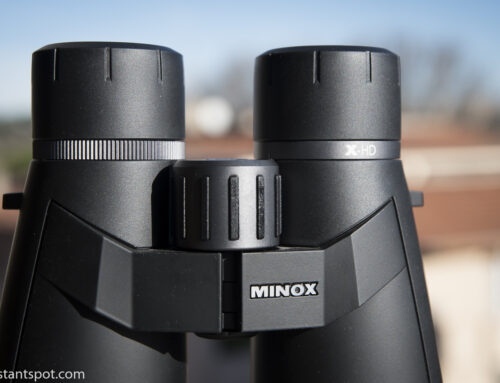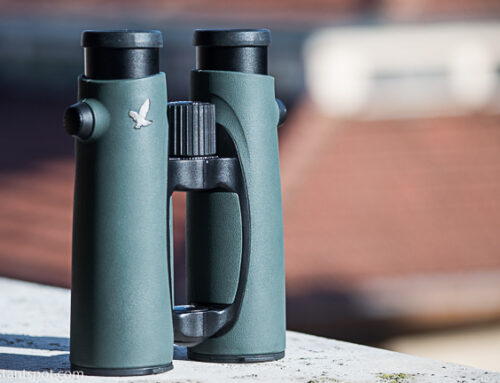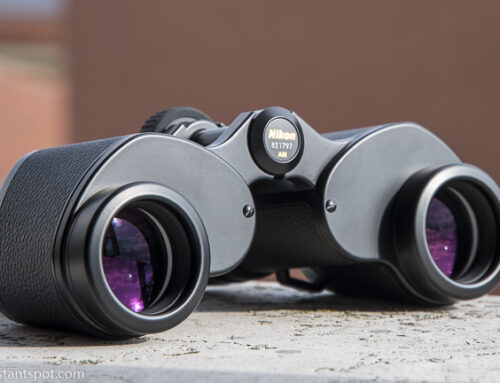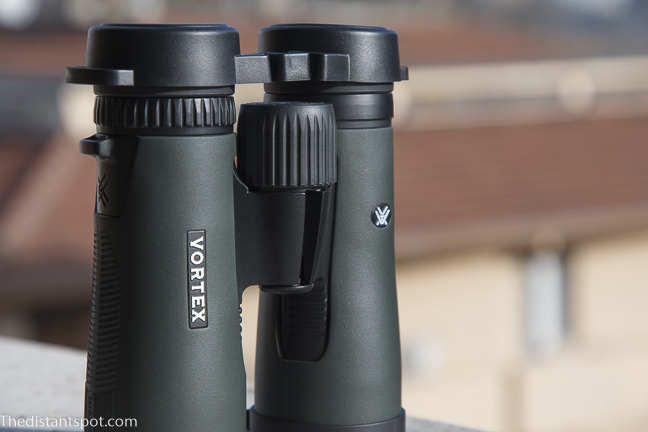Vortex Diamondback HD 8×42
Intro
Looking at the type of binoculars in my possession I should only compare the Vortex Diamondback HD 8×42 with the Swarovski EL 8.5×42 W B. However, considering that the second cost almost eight times the first, it seems fair to also compare them with binoculars of similar price: the Nikon Prostaff 7s 8×30, for which I paid 140€, but which now sell at slightly higher prices.
Construction
The binoculars look really good. They are aesthetically pleasing and seem to have been made with great attention.
I usually deliberately overlook many of the technical characteristics declared by the manufacturers to avoid giving too much weight to what is advertised and concentrate on performance. This time, however, I would like to take the opportunity for a general reflection on the subject.
As stated by Vortex, this Diamondback HD 8×42 adopts practically all the technical measures necessary to create a top of the range.
HD lenses, anti-reflective coating on all lenses (FMC), dielectric coating of the prisms (increases brightness), phase correction coating (increases contrast), magnesium body (it is a very light metal!), waterproof and nitrogen filled (to prevent fogging and fungus), protective treatment for the external lenses, complete rubber coating of the hull.
That means everything you could want and that current technology allows, perhaps with the ecception of a field flattener. My only doubts concern the “HD” lenses, because the use of “selected elements” mentioned in the technical data sheet does not seem to be equivalent to declaring the presence of ED glass or fluorite lenses.
Apart from that, these characteristics seem to place these binoculars in a very different range from what the price alone would suggest. It remains to be seen, however, what is their real impact on the overall optical quality.
Optical qualities
The binoculars offer decent performance. The image is correct in the center and the field of view is just smaller than that of my Swarovski EL 8.5×42 W B.
During the day, though, unless the eye is perfectly positioned with respect to the lenses, there is an annoying internal reflection which could be one of the causes of the decrease in detail and contrast in comparison with the Swarovski.
From this point of view, the Vortex Diamondback HD 8×42 is still superior to the Nikon Prostaff 7s 8×30 which, even without particular reflections, if not with very strong light, show a faded image with quite dull colors.
At night, the brightness seem similar to that of the Swarovski, although the higher contrast of the latter can give the impression of a higher brightness. However, while not really suited for astronomical use, the Vortex are still quite bright.
The field of view is 7.5º, while that of the Swarovski is 7.6º: realistically speaking, you will not notice any difference. The Nikon, on the other hand, has a 6.5 ° field of view and I must say that this time the difference can be seen very well. Switching from one to the other make you feel suddenly crushed.
Eyecups
With the eyecups completely extracted, it is impossible to see the diaphragm, consequently the last fraction of the field of view shows an irregular outline, with an evident drop in light.
To see the diaphragm it is necessary to lower the eyecups by one stop, but then strong blackouts arise, which is even worse. That means you have to live with the defect.
The Nikon don’t show similar problems at the edge, with a field stop almost as sharp as that of the Olympus EXWP I 10×42 (which is my reference).
Chromatic aberration
Framing the right subjects, the chromatic aberration is quite evident even in the exact center of the field and without the need for strong backlighting (I did the test on a rainy day). Moving towards the edge of the image, the lateral chromatism becomes clearly visible in all conditions. In full light, however, bright objects show a noticeable purple outline even in the center of the scene.
For my taste, however, this is an acceptable result, since the aberration does not disturb the vision as it happened with other binoculars. However, both the Swarovski EL 8.5×42 W B and the Nikon Prostaff 7s 8×30 are more correct.
Quite surprisingly, the result seems to reverse at night: using street lamps as a reference, the Swarovski show a strong lateral chromatism on the sidelines, while the Vortex is practically perfect. The test on the moon confirms that: bringing it to the extreme of the field of view, there is only a slight reddish halo on the inner side of the image.
Sharpness
The image is very sharp, even if not at the level of the Swarovski. The field of view is not flat, so there is a marked decrease in sharpness towards the edge, but once in a while it doesn’t start AS SOON as you move away from the center, but a little farther. For example, it is possible to frame the full moon and see it all equally sharp, without a clear worsening at the edges. The Nikon appear less sharp, presumably also due to their lower contrast.
Astigmatism
The stars are not point-like but appear larger than they should, with the side effect of making the field of view seem smaller. The Nikon show more pinpoint stars, although not perfectly round.
Coma
Coma is also present, although not really annoying. It begins to be visible from about half of the field of view and, without ever becoming excessive, it is evident on the edge. Combined with the curvature of the field, it causes the stars at the edge of the image to be almost completely flattened. The Swarovski EL 8.5×42 W B, which have one of their weaknesses in coma correction, are still clearly superior. The Nikon Prostaff 7s 8×30 show slightly less coma, but overall don’t offer a better performance at the edge of the image (and we must consider that the field of view is smaller!).
Tint
It seems essentially neutral to me, perhaps leaning a bit towards the cold colors. I don’t notice any particular difference with the other two binoculars.
Reflections and stray lights
No spikes! This is an excellent result for roof prism binoculars. Not even the most powerful lamppost in the area was able to trouble them. However, when framing the full moon, a reflection appears in the center of the image (the same happens in the Swarovski) and moving sideways there is a rather annoying internal haze, absent in the other two binoculars. Surprisingly, the Nikon exhibit greater resistance to reflections, even if they show some small spikes with fairly strong light sources.
Distortion
The image suffers from an obvious pincushion distortion that causes the straight lines at the edges of the field of view to bend inward. The Nikon also exhibit some pincushion distortion, but to a lesser extent, while the Swarovski have an almost totally correct field.
Conclusions
I must admit that, given the price, I am fairly satisfied with the Vortex Diamondback HD 8×42, but with an important reservation.
They are solid, practical, aesthetically pleasing binoculars, with good qualities and a lifetime warranty (such a rarity!). Coma and astigmatism make them unsuitable for astronomical use, and they also do not shine for portability. Even the case, although well made, is quite bulky, even if it has a system to tie it to the chest that looks comfortable. However, they are decent daytime binoculars.
Among their strong points I can certainly count the excellent construction, good sharpness and the large field of view, which is also quite correct. Unfortunately, the fact that the edge of the framed field is not very sharp, combined with the consequent decrease in brightness, constitutes a significant defect in my opinion. In any case, if you are not particularly sensitive to these issues, these binoculars certainly deserve to be tried.
One final consideration: as expected, the test has shown that applying all the latest technological advances is not enough to make a top of the range product, so it is always necessary to read the technical specifications with a little of discernment.
The use of magnesium may have affected the overall weight, and it seems to me that the phase correction coating has also contributed, but the quality of a pair of binoculars mainly depends on other factors that are much more difficult to assess, such as the optical design and the quality of the lenses and prisms.
On the other hand, I believe that each manufacturer has a fairly accurate idea of the quality of its products in relation to the competition, therefore – net of any special offers – price is a good indicator of what can be expected from every pair of binoculars.
Vortex Diamondback HD 8×42
Intro
Looking at the type of binoculars in my possession I should only compare the Vortex Diamondback HD 8×42 with the Swarovski EL 8.5×42 W B. However, considering that the second cost almost eight times the first, it seems fair to also compare them with binoculars of similar price: the Nikon Prostaff 7s 8×30, for which I paid 140€, but which now sell at slightly higher prices.
Construction
The binoculars look really good. They are aesthetically pleasing and seem to have been made with great attention.
I usually deliberately overlook many of the technical characteristics declared by the manufacturers to avoid giving too much weight to what is advertised and concentrate on performance. This time, however, I would like to take the opportunity for a general reflection on the subject.
As stated by Vortex, this Diamondback HD 8×42 adopts practically all the technical measures necessary to create a top of the range.
HD lenses, anti-reflective coating on all lenses (FMC), dielectric coating of the prisms (increases brightness), phase correction coating (increases contrast), magnesium body (it is a very light metal!), waterproof and nitrogen filled (to prevent fogging and fungus), protective treatment for the external lenses, complete rubber coating of the hull.
That means everything you could want and that current technology allows, perhaps with the ecception of a field flattener. My only doubts concern the “HD” lenses, because the use of “selected elements” mentioned in the technical data sheet does not seem to be equivalent to declaring the presence of ED glass or fluorite lenses.
Apart from that, these characteristics seem to place these binoculars in a very different range from what the price alone would suggest. It remains to be seen, however, what is their real impact on the overall optical quality.
Optical qualities
The binoculars offer decent performance. The image is correct in the center and the field of view is just smaller than that of my Swarovski EL 8.5×42 W B.
During the day, though, unless the eye is perfectly positioned with respect to the lenses, there is an annoying internal reflection which could be one of the causes of the decrease in detail and contrast in comparison with the Swarovski.
From this point of view, the Vortex Diamondback HD 8×42 is still superior to the Nikon Prostaff 7s 8×30 which, even without particular reflections, if not with very strong light, show a faded image with quite dull colors.
At night, the brightness seem similar to that of the Swarovski, although the higher contrast of the latter can give the impression of a higher brightness. However, while not really suited for astronomical use, the Vortex are still quite bright.
The field of view is 7.5º, while that of the Swarovski is 7.6º: realistically speaking, you will not notice any difference. The Nikon, on the other hand, has a 6.5 ° field of view and I must say that this time the difference can be seen very well. Switching from one to the other make you feel suddenly crushed.
Eyecups
With the eyecups completely extracted, it is impossible to see the diaphragm, consequently the last fraction of the field of view shows an irregular outline, with an evident drop in light.
To see the diaphragm it is necessary to lower the eyecups by one stop, but then strong blackouts arise, which is even worse. That means you have to live with the defect.
The Nikon don’t show similar problems at the edge, with a field stop almost as sharp as that of the Olympus EXWP I 10×42 (which is my reference).
Chromatic aberration
Framing the right subjects, the chromatic aberration is quite evident even in the exact center of the field and without the need for strong backlighting (I did the test on a rainy day). Moving towards the edge of the image, the lateral chromatism becomes clearly visible in all conditions. In full light, however, bright objects show a noticeable purple outline even in the center of the scene.
For my taste, however, this is an acceptable result, since the aberration does not disturb the vision as it happened with other binoculars. However, both the Swarovski EL 8.5×42 W B and the Nikon Prostaff 7s 8×30 are more correct.
Quite surprisingly, the result seems to reverse at night: using street lamps as a reference, the Swarovski show a strong lateral chromatism on the sidelines, while the Vortex is practically perfect. The test on the moon confirms that: bringing it to the extreme of the field of view, there is only a slight reddish halo on the inner side of the image.
Sharpness
The image is very sharp, even if not at the level of the Swarovski. The field of view is not flat, so there is a marked decrease in sharpness towards the edge, but once in a while it doesn’t start AS SOON as you move away from the center, but a little farther. For example, it is possible to frame the full moon and see it all equally sharp, without a clear worsening at the edges. The Nikon appear less sharp, presumably also due to their lower contrast.
Astigmatism
The stars are not point-like but appear larger than they should, with the side effect of making the field of view seem smaller. The Nikon show more pinpoint stars, although not perfectly round.
Coma
Coma is also present, although not really annoying. It begins to be visible from about half of the field of view and, without ever becoming excessive, it is evident on the edge. Combined with the curvature of the field, it causes the stars at the edge of the image to be almost completely flattened. The Swarovski EL 8.5×42 W B, which have one of their weaknesses in coma correction, are still clearly superior. The Nikon Prostaff 7s 8×30 show slightly less coma, but overall don’t offer a better performance at the edge of the image (and we must consider that the field of view is smaller!).
Tint
It seems essentially neutral to me, perhaps leaning a bit towards the cold colors. I don’t notice any particular difference with the other two binoculars.
Reflections and stray lights
No spikes! This is an excellent result for roof prism binoculars. Not even the most powerful lamppost in the area was able to trouble them. However, when framing the full moon, a reflection appears in the center of the image (the same happens in the Swarovski) and moving sideways there is a rather annoying internal haze, absent in the other two binoculars. Surprisingly, the Nikon exhibit greater resistance to reflections, even if they show some small spikes with fairly strong light sources.
Distortion
The image suffers from an obvious pincushion distortion that causes the straight lines at the edges of the field of view to bend inward. The Nikon also exhibit some pincushion distortion, but to a lesser extent, while the Swarovski have an almost totally correct field.
Conclusions
I must admit that, given the price, I am fairly satisfied with the Vortex Diamondback HD 8×42, but with an important reservation.
They are solid, practical, aesthetically pleasing binoculars, with good qualities and a lifetime warranty (such a rarity!). Coma and astigmatism make them unsuitable for astronomical use, and they also do not shine for portability. Even the case, although well made, is quite bulky, even if it has a system to tie it to the chest that looks comfortable. However, they are decent daytime binoculars.
Among their strong points I can certainly count the excellent construction, good sharpness and the large field of view, which is also quite correct. Unfortunately, the fact that the edge of the framed field is not very sharp, combined with the consequent decrease in brightness, constitutes a significant defect in my opinion. In any case, if you are not particularly sensitive to these issues, these binoculars certainly deserve to be tried.
One final consideration: as expected, the test has shown that applying all the latest technological advances is not enough to make a top of the range product, so it is always necessary to read the technical specifications with a little of discernment.
The use of magnesium may have affected the overall weight, and it seems to me that the phase correction coating has also contributed, but the quality of a pair of binoculars mainly depends on other factors that are much more difficult to assess, such as the optical design and the quality of the lenses and prisms.
On the other hand, I believe that each manufacturer has a fairly accurate idea of the quality of its products in relation to the competition, therefore – net of any special offers – price is a good indicator of what can be expected from every pair of binoculars.


